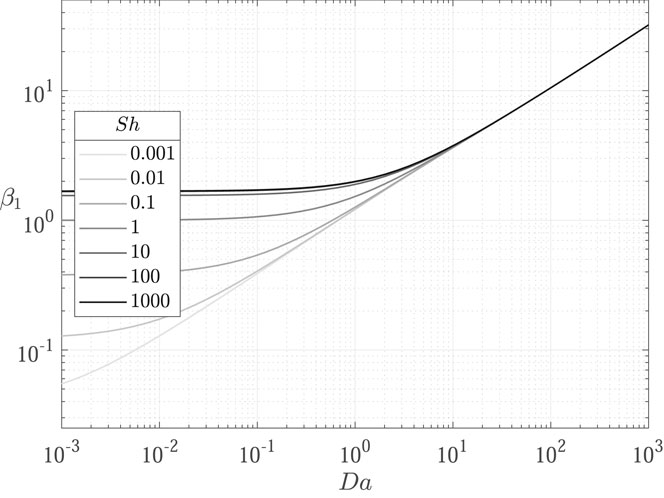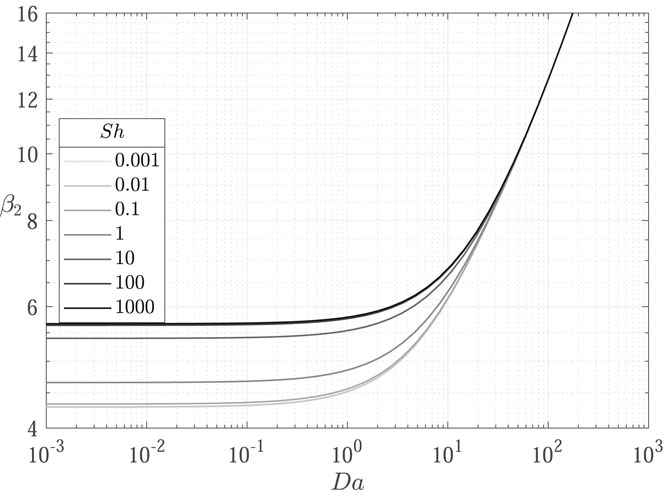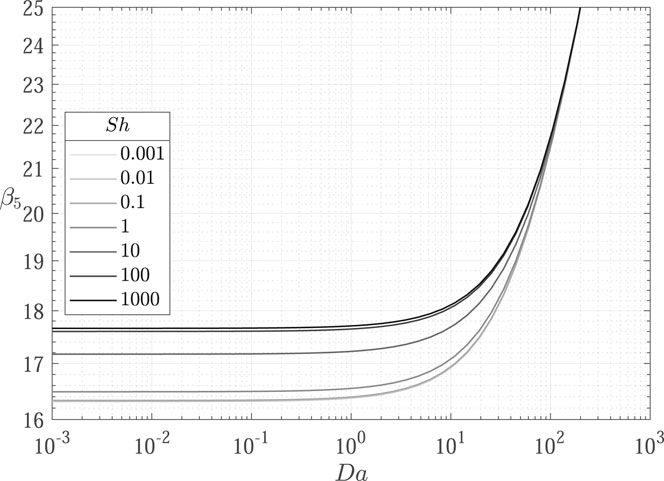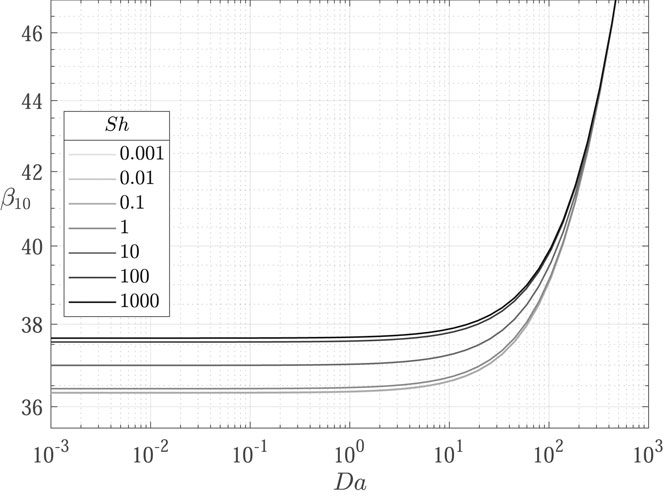- 1Department of Energy, Politecnico di Milano, Milano, Italy
- 2Sezione di Milano-Bicocca, Istituto Nazionale di Fisica Nucleare (INFN), Milano, Italy
Nuclear reactor modeling has been shifting, over the last decades, towards full-core multiphysics analysis due to the ever-increasing safety requirements and complexity of the designs of innovative systems. This is particularly true for liquid-fuel reactor concepts such as the Molten Salt Fast Reactor (MSFR), given their strong intrinsic coupling between thermal-hydraulics, neutronics and fuel chemistry. In the MSFR, fission products (FPs) are originated within the liquid fuel and are carried by the fuel flow all over the reactor core and through pumping and heat exchange systems. Some of FP species, in the form of solid precipitates, can represent a major design and safety challenge, e.g., due to deposition on solid boundaries, and their distribution in the core is relevant to the design and safety analysis of the reactor. In this regard it is essential, both for the design and the safety assessment of the reactor, the capability to model the transport of solid FPs and their deposition to the boundary (e.g., wall or heat exchanger structures). To this aim, in this study, models of transport of solid FPs in the MSFR are developed and verified. An Eulerian single-phase transport model is developed and integrated in a consolidated multiphysics model of the MSFR based on the open-source CFD library OpenFOAM. In particular, general mixed-type deposition boundary conditions are considered, to possibly describe different kinds of particle-wall interaction mechanisms. For verification purposes, analytical solutions for simple case studies are derived ad hoc based on the extension of the classic Graetz problem to linear decay, distributed source terms and mixed-type boundary conditions. The results show excellent agreement between the two models, and highlight the effects of decay and deposition phenomena of various intensity. The resulting approach constitutes a computationally efficient tool to extend the capabilities of CFD-based multiphysics MSFR calculations towards the simulation of solid fission products transport.
1 Introduction
Liquid-fuel reactor concepts have gained renewed interest over the last years. Among them, the Molten Salt Reactor (MSR) and, in particular, the fast-spectrum MSFR (Molten Salt Fast Reactor) has obtained a prominent role thanks to the selection as one of the Generation IV reference technologies (Serp et al., 2014). The adoption of a circulating liquid fuel, in conjunction with the fast neutron spectrum, makes the MSFR system unique from the design and modeling viewpoints. Internal heat generation, fuel thermal feedback and transport of delayed neutron precursors and fission products lead to a strong intrinsic coupling between thermal-hydraulics, neutronics and fuel chemistry. Reactor modeling efforts have therefore shifted towards full-core and multiphysics analysis to meet the requirements and complexity of physical and computational models for the MSFR. A comprehensive account of state-of-the-art multiphysics modeling tools for the MSFR can be found in the work of Tiberga et al. (2020).
In the MSFR, fission products (FPs) that are originated within the fuel as the result of fission reactions are not retained by solid fuel elements and are therefore free to be carried by the liquid fuel flow within the primary circuit. The presence of mobile FPs represents a major design and safety challenge, as some of them are not expected to form stable compounds with the constituents of the fuel salt mixture (Grimes, 1970; Baes, 1974) and therefore give rise to separate phases, either in the form of solid precipitates or gas bubbles. In the case of solid FPs, precipitates are likely to deposit on reactor solid surfaces (Kedl, 1972; Compere et al., 1975) with potential issues such as formation of localized decay heat sources as well as deterioration of heat exchanger performance. Surface deposits might also pose a serious radiological threat in inspection/maintenance operations. Despite the analysis of FPs transport in recent MSFR studies is still limited, information on their distribution over the reactor core has great relevance for the design of the reactor, and in particular for the analysis of removal/reprocessing (Delpech et al., 2009) and bubbling (Cervi et al., 2019b) units. In this regard, there has been focus on modelling the behavior and effects of Xenon transport in MSRs (Price et al., 2020). Concerning metallic FPs, their analysis in the context of a multiphysics system code for the study of the Molten Salt Reactor Experiment has been recently addressed by Walker and Ji (2021). The aim of this work is the development of models of transport of solid FPs and their integration in state-of-the-art multiphysics tools adopted for MSFR analysis. To this aim, a single-phase Eulerian transport modeling approach is chosen, which represents a common and versatile choice for particle transport modeling in complex turbulent flows, and allows for the direct implementation in consolidated MSFR codes. A similar approach has been recently employed for the coupling of CFD and equilibrium chemistry calculations with application to localized-corrosion modeling in lead-cooled reactors (Marino et al., 2020). The development platform is the C++ open-source finite-volume CFD library OpenFOAM (OpenFOAM, 2021).
A preliminary implementation is here described and verified against analytical solutions for simplified test cases. The analytical solutions are derived from the well-known Graetz problem, which is here formulated for a general case with distributed source terms, linear decay and mixed-type boundary conditions. To the authors knowledge, such form of the Graetz problem has not been addressed in detail in the literature, and therefore the complete derivation is here reported. The influence of some key model parameters is discussed, and corresponding solutions from the OpenFOAM and analytical models are presented and compared.
The paper is organized as follows. The adopted multiphysics approach is briefly described in Section 2.1. In Section 2.2, the proposed FPs transport model implemented in the OpenFOAM solver is described in detail. The analytical solution against which the OpenFOAM FPs transport model is verified is presented in Section 2.3. Section 3 presents the results of the verification together with some discussion. Conclusive remarks are finally reported in Section 4.
2 Materials and Methods
2.1 The Multiphysics Model
The OpenFOAM library, based on standard finite-volume methods for CFD calculations, is used to develop the numerical solver used in the present work. Originally developed for the transient analysis of the MSFR (Aufiero et al., 2014), the adopted multiphysics solver was recently extended to allow for the study of compressibility effects during super-prompt-critical transients (Cervi et al., 2019b) and of the bubbling system (Cervi et al., 2019a). The version employed in this work features single-phase incompressible thermal-hydraulics, multi-group neutron diffusion and transport equations for delayed neutron and decay heat precursors. Transport equations for fission products are solved alongside the other physical modules, to provide a fully-coupled multiphysics simulation. All model equations are solved by means of finite-volume discretization, following an iterative segregated coupling approach.
2.1.1 Thermal-Hydraulics Model
Continuity, momentum and energy (in temperature form) conservation equations are expressed in a single-phase incompressible formulation:
where the quantities
where
Pressure-velocity coupling is performed through the standard SIMPLE/PISO algorithms (Patankar and Spalding, 1972; Issa, 1986).
2.1.2 Neutronics Model
The multi-group diffusion model is adopted for neutron flux calculations (Hébert, 2010). Despite some limitations, it is widely employed in standard nuclear reactor analysis. Thanks to its relative simplicity and limited computational effort, it has found several successful applications especially for multiphysics analysis (Aufiero et al., 2014; Fiorina et al., 2016). More recent works have also proposed the extension of OpenFOAM-based multiphysics codes to more advanced neutron transport approaches, e.g. the SP3 model (Fiorina et al., 2017; Cervi et al., 2019b). The diffusion equation for the gth group-integrated neutron flux
where
The presence of
Due to the circulating nature of the fuel, transport equations are formulated also for delayed neutron and decay heat precursors. The transport equation for the concentration of delayed neutron precursors of the kth family
A discussion on the diffusion coefficient
Group constants are adjusted as functions of local temperature around reference values to account for Doppler and fuel density effects. For a generic neutron reaction r occurring in the gth energy group:
where Doppler effects are modeled by means of a logarithmic term where
2.2 Fission Products Transport Model
Similarly to other transported scalar quantities, each fission product specie is modelled as a continuous scalar concentration field subject to advection, dispersion and decay mechanisms:
where c is the concentration of the species under consideration, expressed in number of particles per unit volume.
As previously mentioned, this modeling choice is motivated by the need to limit the overall complexity and computational requirements of the MSFR, and to easily integrate such models in state-of-the-art MSFR codes. The single-phase Eulerian approach can still represent a valid approximation, provided that some conditions are met. Theoretical and experimental analysis has suggested that Fick’s diffusion law only applies when inertial effects are negligible, and that particles inertia plays an increasingly dominant role in transport mechanisms as particles size increases (Liu and Agarwal, 1974; Guha, 2008). Little information is known about the expected size of fission product particles in the MSFR, but previous experience with MSRs suggests formation of colloidal suspensions (i.e., with particle diameters approx. between 10–9 and 10–6 m) should be expected (Compere et al., 1975) and that simple diffusion laws may apply, at least as a first approximation. The other main condition requires the particle concentration in the carrier fluid to be sufficiently low to make all interactions between each particle and the fluid, or among particles themselves, negligible. Provided that such conditions are met, the adoption of more sophisticated approaches, e.g., Eulerian-Eulerian multiphase or Eulerian-Lagrangian, may prove little benefit at the expense of a much more complex modeling framework.
As regards the particle diffusivity, it is commonly assumed that the diffusivity coefficient
where
which is derived under the assumption of large Schmidt number
2.2.1 Deposition Modeling
Besides particle transport in the bulk flow, transport mechanisms which lead to deposition need to be addressed separately. First of all, when particle-wall interaction in the boundary layer is considered, a variable diffusion coefficient can be introduced to model hydrodynamic interactions between particles and solid walls (Brenner, 1961). In such case,
where y denotes the wall-distance in the normal direction in a boundary layer flow. Moreover, it is commonly accepted that
where
Moreover, to model deposition mechanisms and formulate appropriate boundary conditions for the particle concentration field, one possible approach is the inclusion in the transport equation of a particle-wall interaction forcing term based on an interaction potential energy ϕ (Ruckenstein and Prieve, 1973; Bowen et al., 1976). Since boundary layer flows are inherently two-dimensional, close to a generic wall the steady-state transport equation reads
where x and y here denote the longitudinal and transversal directions. This approach is general but introduces significant complication in the general problem. It is therefore beneficial, when possible, to decouple the advection-diffusion and deposition problems.
When the energy potential ϕ and the hydrodynamic interaction effects are significant only over distances of the order of the particle size, this can be effectively achieved by dividing the boundary layer in two regions (Figure 1): the bulk region, where advection occurs and interactions are negligible, and a very thin wall region, where advection is negligible and deposition processes take place. The two regions are subject to an interface condition, which equates the particle concentration
where
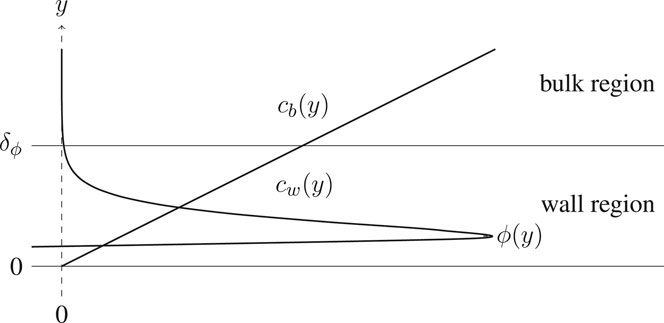
FIGURE 1. Decoupling of the transport and deposition problems: solutions for the wall region (
The coefficient γ is therefore a constant depending on F and ϕ. In principle its value might also depend on the integration limit
In the general three-dimensional case, the wall boundary condition can be written as
for any point on the wall boundary, where
where
with δ being the desorption rate constant (Wood et al., 2004).
2.3 Test Case
In this Section the results of the verification of the implemented FP transport model are described. A simple test case with an analytical solution has been chosen. A two-dimensional channel between parallel plates is considered (Figure 2). The particle transport model is decoupled from neutronics and heat transfer models. The source term S from Eq 10 is therefore specified explicitly, and a steady-state isothermal laminar flow is considered.

FIGURE 2. Parallel plates geometry: with respect to the flow, the x and y coordinates denote the longitudinal and transversal directions. Inlet and outlet boundaries are located at
The problem here considered resembles the well-known Graetz problem, for which different solutions are available in the literature. An exhaustive treatment of the Graetz theory applied to particle transport problems is given by Bowen et al. (1976), although it doesn’t consider linear decay or distributed source terms. It is indeed difficult to find, in the literature, realistic applications which consider simultaneously, as in the case under consideration, distributed internal sources, decay reactions and mixed type boundary conditions. Corresponding analytical solutions for this specific problem are not found in the literature, and are therefore derived in the following.
2.3.1 Momentum Equation
Analytical solutions of the momentum equation can be found only for simple steady-state fully-developed laminar flow problems. In such a case, the well known parabolic solution reads
with
where
2.3.2 Particle Concentration Equation
The boundary value problem then becomes, in explicit cartesian coordinates,
where D is used, from now on, to denote the constant bulk diffusivity. Boundary conditions for the x-direction are discussed later. The problem is conveniently re-scaled by defining appropriate non-dimensional quantities:
where
where non-dimensional groups are defined as
Longitudinal diffusion is neglected to allow for separation of variables. This assumption is reasonable in all cases where diffusion is negligible compared to advection, i.e., if
where
For the following discussion, it is convenient to assume that the distributed source can be expressed as
where
On the other hand, when a distributed source is present, the inlet contribution is forgotten as the fully-developed concentration profile is attained and therefore a more meaningful choice should be based on the relative intensity of generation and removal mechanisms. When radioactive decay is dominant, a good definition reads
When decay is negligible, the reference concentration
These values are useful to identify correct scaling with respect to the dominant removal mechanisms. Similar expressions are easily found when solving for the centerline concentration in fully-developed profiles with uniform source.
Solutions of the boundary value problem Eq 26 can be found by separation of variables:
2.3.3 Derivation of the Analytical Solution
The functions
The eigenvalue problem is therefore stated as
where
and
It is easily verified that
where
are two linearly independent solutions.
where
denotes the so-called Pochhammer symbol, or rising factorial. The eigenvalue problem must be solved by imposing the associated boundary conditions. By means of the following properties of
it can be easily shown that the symmetry condition at
which gives the
whose general solution (back in terms of
The separated Eq 32 now reads
The eigenfunctions
with
This is exploited to transform Eq 46 into
whose general solution is
To obtain this last form,
and the arbitrary constants
where
The normalization constants
3 Results and Discussion
In this Section, results of the verification of the implemented models against the analytical solutions are presented. In Section 2.3.3 it is shown that, if the effect of desorption is negligible compared to decay, the
with
It is therefore evident that the inclusion of a linear decay term in the transport equation affects the concentration profiles shape by shifting the eigenvalues. As shown in Figures 3–6, the influence of the decay parameter
In the following, results from the comparison between the OpenFOAM model described in Section 2.2 and the corresponding analytical solutions are discussed. To highlight the role of decay and deposition phenomena, the selected parameters are
To simplify the analysis, the inlet concentration is set to zero (
It follows that
Therefore in dimensionless form the solution does not depend on the source term average value, but only on its shape. For the present analysis, a cosine-shaped source term has been selected to resemble the typical shape of fission rate profiles in simplified reactor geometries such as the one here considered:
Concentration profiles obtained for the nine test cases (Table 1) are shown in Figures 7–9.
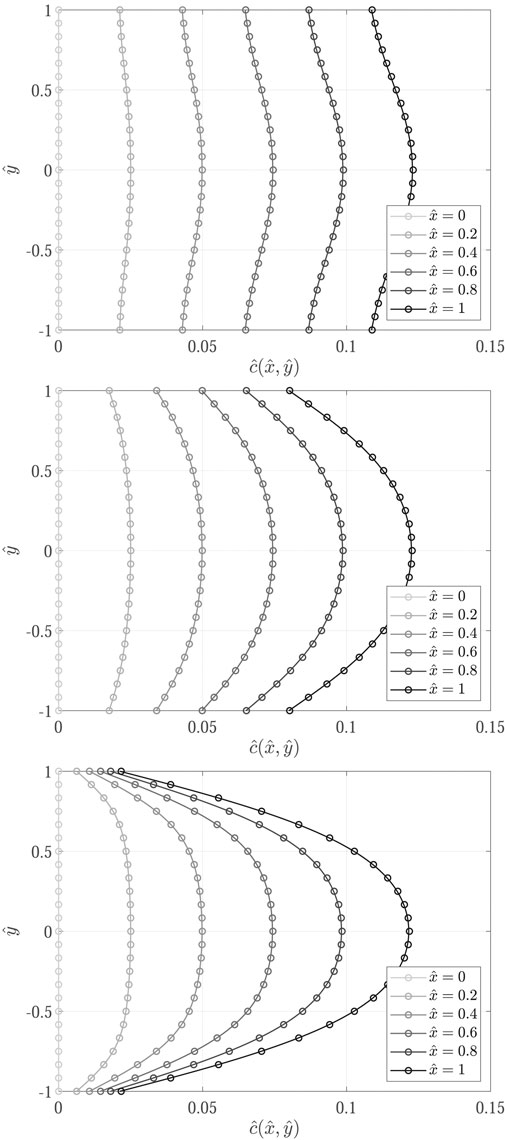
FIGURE 7. Comparison of concentration profiles obtained with the proposed transport model implemented in OpenFOAM (
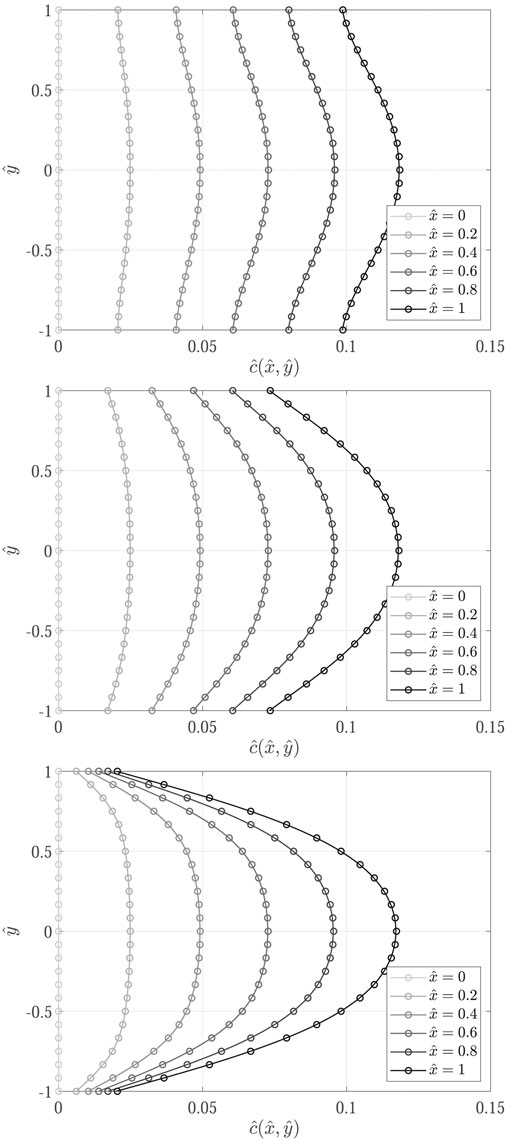
FIGURE 8. Comparison of concentration profiles obtained with the proposed transport model implemented in OpenFOAM (
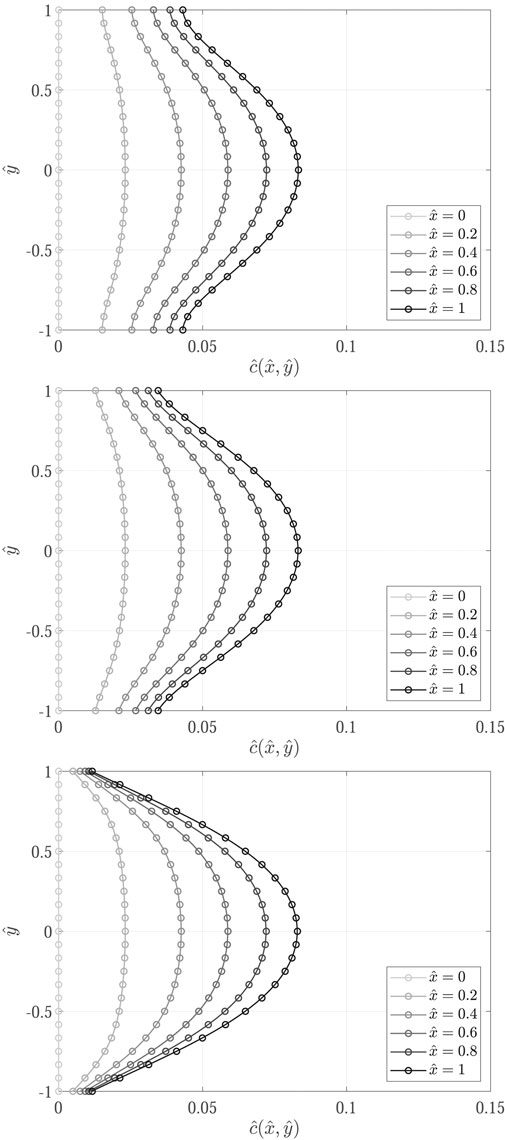
FIGURE 9. Comparison of concentration profiles obtained with the proposed transport model implemented in OpenFOAM (
Results show excellent agreement between the proposed transport model and the analytical solutions, proving a successful verification of the implemented transport models in OpenFOAM. The influence of decay is evidenced from the decrease in concentration profiles from
We finally report here some brief computational information regarding the verification. All simulations were performed on a structured orthogonal mesh, constituted by 5 × 104 hexahedral volumes, with respectively 500 and 100 divisions on the longitudinal and transversal directions. All 9 cases shown similar convergence behavior, with approximately 5 × 104 pseudo-transient iterations needed to ensure tight convergence for the particle concentration field. Computational times are comparable among all cases, showing no significant dependence on the physical parameters within the selected range (Table 3).

TABLE 3. Computational times for the verification cases. 5 × 104 iterations are performed on 5 × 104 volumes with eight CPUs.
4 Conclusion
In this paper, the preliminary development of transport models for the solid fission products in the MSFR was discussed. Simplified transport models based on a Eulerian single-phase framework were implemented in consolidated MSFR multiphysics simulation tools based on the open-source finite-volume library OpenFOAM. The resulting model has been verified against analytical solutions for simplified test cases, based on an extended version of the Graetz problem. Results show the good agreement between the two models, proving the correct implementation of the transport and deposition mechanisms considered and the capability of OpenFOAM in treating coupled deposition and decay phenomena of different relative intensities, albeit on a simplified reference problem. The proposed approach constitutes a computationally efficient framework to extend the capabilities of CFD-based multiphysics MSFR calculations towards the simulation of solid fission products transport.
The analytical model used for verification has been developed specifically for this application. The simultaneous presence of distributed internal generation, radioactive decay and mixed deposition boundary condition in a Graetz problem represents an original contribution, and the resulting analytical model could therefore constitute a useful benchmark for future developments of the FPs migration model and for other similar MSFR applications. Future work will include the analysis of the integration of FPs transport in a full reactor simulation. In this regard, turbulent transport in more complex geometries may lead to large concentration gradients close to walls, with the need for mesh refinement. The extension to reactor simulation might therefore lead to numerical and/or computational issues to be addressed. Among other possible limitations of the current modelling approach, we highlight the adoption pure concentration-driven diffusive transport. As already mentioned, such approximation is strictly valid only for particles of very small size. Further study will be needed to assess the validity of such assumption for MSFR applications and to possibly extend the methodology to more advanced particle transport models.
Data Availability Statement
The datasets presented in this study can be found in online repositories. The names of the repository/repositories and accession number(s) can be found in the article/Supplementary Material. The data that support the findings of this study are openly available in Zenodo at http://doi.org/10.5281/zenodo.4557568.
Author Contributions
All authors contributed to conception and design of the study. AD performed the theoretical and technical analysis and wrote the first draft of the manuscript. SL, FG and AC supervised the analysis. All authors contributed to manuscript revision, read, and approved the submitted version.
Funding
This project has received funding from the Euratom research and training programme 2014–2018 under grant agreement no. 847527.
Disclaimer
The content of this paper does not reflect the official opinion of the European Union. Responsibility for the information and/or views expressed therein lies entirely with the authors.
Conflict of Interest
The authors declare that the research was conducted in the absence of any commercial or financial relationships that could be construed as a potential conflict of interest.
Supplementary Material
The Supplementary Material for this article can be found online at: https://www.frontiersin.org/articles/10.3389/fenrg.2021.692627/full#supplementary-material
References
Aufiero, M., Cammi, A., Geoffroy, O., Losa, M., Luzzi, L., Ricotti, M. E., et al. (2014). Development of an OpenFOAM Model for the Molten Salt Fast Reactor Transient Analysis. Chem. Eng. Sci. 111, 390–401. doi:10.1016/j.ces.2014.03.003
Baes, C. F. (1974). The Chemistry and Thermodynamics of Molten Salt Reactor Fuels. J. Nucl. Mater. 51, 149–162. doi:10.1016/0022-3115(74)90124-X
Balboa Usabiaga, F., Xie, X., Delgado-Buscalioni, R., and Donev, A. (2013). The Stokes-Einstein Relation at Moderate Schmidt Number. J. Chem. Phys. 139, 214113. doi:10.1063/1.4834696
Bowen, B. D., Levine, S., and Epstein, N. (1976). Fine Particle Deposition in Laminar Flow through Parallel-Plate and Cylindrical Channels. J. Colloid Interf. Sci. 54, 375–390. doi:10.1016/0021-9797(76)90317-9
Brenner, H. (1961). The Slow Motion of a Sphere through a Viscous Fluid towards a Plane Surface. Chem. Eng. Sci. 16, 242–251. doi:10.1016/0009-2509(61)80035-3
Cervi, E., Lorenzi, S., Cammi, A., and Luzzi, L. (2019a). Development of a Multiphysics Model for the Study of Fuel Compressibility Effects in the Molten Salt Fast Reactor. Chem. Eng. Sci. 193, 379–393. doi:10.1016/j.ces.2018.09.025
Cervi, E., Lorenzi, S., Cammi, A., and Luzzi, L. (2019b). Development of an SP3 Neutron Transport Solver for the Analysis of the Molten Salt Fast Reactor. Nucl. Eng. Des. 346, 209–219. doi:10.1016/j.nucengdes.2019.03.001
Compere, E., Kirslis, S., Bohlmann, E., Blankenship, F., and Grimes, W. (1975). “Fission Product Behavior in the Molten Salt Reactor experiment.”. Tech. Rep. ORNL–, 4865, 4077644 (Oak Ridge National Laboratory) Oak Ridge (TN). doi:10.2172/4077644
Delpech, S., Merle-Lucotte, E., Heuer, D., Allibert, M., Ghetta, V., Le-Brun, C., et al. (2009). Reactor Physic and Reprocessing Scheme for Innovative Molten Salt Reactor System. J. Fluorine Chem. 130, 11–17. doi:10.1016/j.jfluchem.2008.07.009
Fiorina, C., Hursin, M., and Pautz, A. (2017). Extension of the GeN-Foam Neutronic Solver to SP3 Analysis and Application to the CROCUS Experimental Reactor. Ann. Nucl. Energ. 101, 419–428. doi:10.1016/j.anucene.2016.11.042
Fiorina, C., Kerkar, N., Mikityuk, K., Rubiolo, P., and Pautz, A. (2016). Development and Verification of the Neutron Diffusion Solver for the GeN-Foam Multi-Physics Platform. Ann. Nucl. Energ. 96, 212–222. doi:10.1016/j.anucene.2016.05.023
DLMF (2020). “NIST Digital Library of Mathematical Functions. Release 1.1.0 of 2020-12-15,”. Editors F. W. J. Olver, A. B. Olde Daalhuis, D. W. Lozier, B. I. Schneider, R. F. Boisvert, C. W. Clarket al.
Grimes, W. R. (1970). Molten-salt Reactor Chemistry. Nucl. Appl. Tech. 8, 137–155. doi:10.13182/NT70-A28621
Guha, A. (2008). Transport and Deposition of Particles in Turbulent and Laminar Flow. Annu. Rev. Fluid Mech. 40, 311–341. doi:10.1146/annurev.fluid.40.111406.102220
Hébert, A. (2010). “Multigroup Neutron Transport and Diffusion Computations,” in Handbook of Nuclear Engineering. Editor D. G. Cacuci (Boston, MA: Springer US), 751–911. doi:10.1007/978-0-387-98149-9_8
Issa, R. I. (1986). Solution of the Implicitly Discretised Fluid Flow Equations by Operator-Splitting. J. Comput. Phys. 62, 40–65. doi:10.1016/0021-9991(86)90099-9
Johansson, F. (2017). Arb: Efficient Arbitrary-Precision Midpoint-Radius Interval Arithmetic. IEEE Trans. Comput. 66, 1281–1292. doi:10.1109/TC.2017.2690633
Johansson, F. (2019). Computing Hypergeometric Functions Rigorously. ACM Trans. Math. Softw. 45, 1–26. doi:10.1145/3328732
Kedl, R. J. (1972). “Migration of a Class of Fission Products (Noble Metals) in the Molten-Salt Reactor experiment,”. Tech. Rep. ORNL-TM–3884, 4471292(Oak Ridge National Laboratory) Oak Ridge (TN). doi:10.2172/4471292
Launder, B. E., and Spalding, D. B. (1974). The Numerical Computation of Turbulent Flows. Comp. Methods Appl. Mech. Eng. 3, 269–289. doi:10.1016/0045-7825(74)90029-2
Leppänen, J., Pusa, M., Viitanen, T., Valtavirta, V., and Kaltiaisenaho, T. (2015). The Serpent Monte Carlo Code: Status, Development and Applications in 2013. Ann. Nucl. Energ. 82, 142–150. doi:10.1016/j.anucene.2014.08.024
Liu, B. Y. H., and Agarwal, J. K. (1974). Experimental Observation of Aerosol Deposition in Turbulent Flow. J. Aerosol Sci. 5, 145–155. doi:10.1016/0021-8502(74)90046-9
Marino, A., Peltomäki, M., Lim, J., and Aerts, A. (2020). A Multi-Physics Computational Tool Based on CFD and GEM Chemical Equilibrium Solver for Modeling Coolant Chemistry in Nuclear Reactors. Prog. Nucl. Energ. 120, 103190. doi:10.1016/j.pnucene.2019.103190
Patankar, S., and Spalding, D. (1972). A Calculation Procedure for Heat, Mass and Momentum Transfer in Three-Dimensional Parabolic Flows. Int. J. Heat Mass Transfer 15, 1787a–1806. doi:10.1016/0017-9310(72)90054-3
Pearson, J. W., Olver, S., and Porter, M. A. (2017). Numerical Methods for the Computation of the Confluent and Gauss Hypergeometric Functions. Numer. Algorithms 74, 821–866. doi:10.1007/s11075-016-0173-0
Price, T., Chvala, O., and Bereznai, G. (2020). A Dynamic Model of Xenon Behavior in the Molten Salt Reactor Experiment. Ann. Nucl. Energ. 144, 107535. doi:10.1016/j.anucene.2020.107535
Prieve, D. C., and Ruckenstein, E. (1976). Rates of Deposition of Brownian Particles Calculated by Lumping Interaction Forces into a Boundary Condition. J. Colloid Interf. Sci. 57, 547–550. doi:10.1016/0021-9797(76)90232-0
Ruckenstein, E., and Prieve, D. C. (1973). Rate of Deposition of Brownian Particles under the Action of london and Double-Layer Forces. J. Chem. Soc. Faraday Trans. 2 69, 1522–1536. doi:10.1039/F29736901522
Serp, J., Allibert, M., Beneš, O., Delpech, S., Feynberg, O., Ghetta, V., et al. (2014). The Molten Salt Reactor (MSR) in Generation IV: Overview and Perspectives. Prog. Nucl. Energ. 77, 308–319. doi:10.1016/j.pnucene.2014.02.014
Tiberga, M., de Oliveira, R. G. G., Cervi, E., Blanco, J. A., Lorenzi, S., Aufiero, M., et al. (2020). Results from a Multi-Physics Numerical Benchmark for Codes Dedicated to Molten Salt Fast Reactors. Ann. Nucl. Energ. 142, 107428. doi:10.1016/j.anucene.2020.107428
Walker, S. A., and Ji, W. (2021). Species Transport Analysis of noble Metal Fission Product Transport, Deposition, and Extraction in the Molten Salt Reactor experiment. Ann. Nucl. Energ. 158, 108250. doi:10.1016/j.anucene.2021.108250
Wood, B. D., Quintard, M., and Whitaker, S. (2004). Estimation of Adsorption Rate Coefficients Based on the Smoluchowski Equation. Chem. Eng. Sci. 59, 1905–1921. doi:10.1016/j.ces.2003.12.021
Nomenclature
Latin symbols
c particle (vol.) concentration
c0 ref. particle (vol.) concentration
cd deposited particle (surf.) concentration
ck kth family del. neutron prec. (vol.) concentration
cp specific heat capacity
cin inlet particle (vol.) concentration
D laminar particle diffusivity
dp particle diameter
Dt turbulent particle diffusivity
Deff effective particle diffusivity
Da Damköhler number
f channel aspect ratio
FD particle diffusivity correction factor
g gravitational acceleration
H channel half-width
kB Boltzmann constant
keff effective multiplication factor
L channel length
M confluent hypergeometric function
p pressure
Pe Péclet number
Pr Prandtl number
Prt turbulent Prandtl number
q vol. energy source
Re Reynolds number
S particle (vol.) source
Sc Schmidt number
Sct turbulent Schmidt number
Sh Sherwood number
T temperature
T0 reference temperature (buoyancy)
u longitudinal velocity comp. velocity
u longitudinal velocity comp. velocity
um maximum profile velocity
x longitudinal coordinate
y transversal coord.
Greek symbols
α laminar thermal diffusivity
αt turbulent thermal diffusivity
αeff effective thermal diffusivity
δ desorption rate constant
γ deposition velocity
λ particle decay constant
ρ fluid density
ν laminar kinematic viscosity
ϕ particle-wall interaction potential
Keywords: molten salt fast reactor, molten salt, fission products, particle deposition, multiphysics
Citation: Di Ronco A, Lorenzi S, Giacobbo F and Cammi A (2021) An Eulerian Single-Phase Transport Model for Solid Fission Products in the Molten Salt Fast Reactor: Development of an Analytical Solution for Verification Purposes. Front. Energy Res. 9:692627. doi: 10.3389/fenrg.2021.692627
Received: 08 April 2021; Accepted: 01 June 2021;
Published: 29 June 2021.
Edited by:
Wenzhong Zhou, Sun Yat-Sen University, ChinaReviewed by:
Yu Ma, Sun Yat-Sen University, ChinaJiankai Yu, Massachusetts Institute of Technology, United States
Copyright © 2021 Di Ronco, Lorenzi, Giacobbo and Cammi. This is an open-access article distributed under the terms of the Creative Commons Attribution License (CC BY). The use, distribution or reproduction in other forums is permitted, provided the original author(s) and the copyright owner(s) are credited and that the original publication in this journal is cited, in accordance with accepted academic practice. No use, distribution or reproduction is permitted which does not comply with these terms.
*Correspondence: Antonio Cammi, YW50b25pby5jYW1taUBwb2xpbWkuaXQ=
 Andrea Di Ronco
Andrea Di Ronco Stefano Lorenzi
Stefano Lorenzi Francesca Giacobbo
Francesca Giacobbo Antonio Cammi
Antonio Cammi